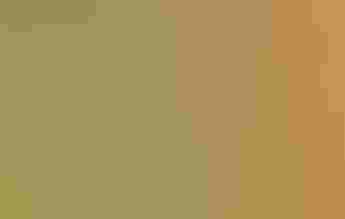
Birds and native plants are made for each other, thanks to millions of years of evolution. Large, colorful fruits feed birds and, in return, birds spread the plant’s seeds far and wide, supporting whole ecosystems. Native plants are also important hosts for protein-rich native insects like butterfly and moth caterpillars, which nesting birds need to feed their growing chicks. For their part, birds have shaped their entire life cycles, including their migrations and feeding habits, around plant communities and the seasonal fruits and insects they serve up.
These bird-plant relationships are often so intertwined that gardeners can attract specific avians to their yards by cultivating the right plants. To help you out, we’ve selected the native plants that common backyard birds depend on, so you can support them in your yard. For more information, check out our handy native plants database to find the best species for birds in your area. And if you're not sure what species is visiting your native plants, download our free Audubon bird guide to find out.
Sparrows
Birds: Dark-eyed Junco, White-throated Sparrow, White-crowned Sparrow, Song Sparrow, Lark Sparrow
Attract Them With: Blackberries (Rubus sp.) and wild grasses (Andropogon, Bouteloua, Panicum, and Sorghastrum spp.)
This one is a no-brainer: Sparrows love thickets and tall grass, so plant patches of blackberry thicket and wild grasses to attract them. Blackberries and wild grasses offer fruits and seeds as food, and they also provide nesting habitat, shelter from harsh weather, and foraging grounds where sparrows, along with other birds like warblers and chickadees, can hunt for insects. Willows, sagebrush, and other dense or shrub-like native plants are also good for attracting these birds.
Cardinals, Grosbeaks, and Tanagers
Birds: Northern Cardinal, Rose-breasted Grosbeak, Black-headed Grosbeak, Blue Grosbeak, Scarlet Tanager, Western Tanager
Attract Them With: Sunflowers (Helianthus sp.), elderberries (Sambucus sp.), and serviceberries (Amelanchier sp.)
There are few pleasures greater than watching birds pluck nutrient-rich seeds from the center of enormous yellow sunflowers. Sunflowers attract a wide variety of bird species, and so are practically bird feeders that you can grow in your yard.
Less widely known are elderberries and serviceberries. Highly nutritious fruits prized by cardinals, grosbeaks, and tanagers drip from the branches of these small trees (or large shrubs, depending on their size). Rose-breasted Grosbeaks, for instance, depend heavily on these native berries during fall migration; 95 percent of their diets are fruit during this time. Additionally, elderberry flowers attract insects, which in turn attract even more birds in spring. Many varieties of sunflowers, elderberries, and serviceberries are edible for humans, too—if you can beat the birds to them.
Crows and Jays
Birds: American Crow, Fish Crow, Northwestern Crow, Blue Jay, California Scrub-Jay, Woodhouse’s Scrub-Jay, Florida Scrub-Jay
Attract Them With: Oaks (Quercus sp.) and beeches (Fagus sp.)
Throughout the year, these intelligent and wary birds consume a wide variety of animals and plants. But in the fall and winter months, they often depend on mast crops of oak acorns and beechnuts. In addition to their seedier offerings, oaks play host to caterpillars of over 530 species of moths and butterflies. Caterpillars are a crucial food for nestling songbirds in the spring, and so these trees draw migrating warblers, tanagers, grosbeaks, and orioles, as well as crows and jays.
Woodpeckers
Birds: Downy Woodpecker, Hairy Woodpecker, Red-bellied Woodpecker, Ladder-backed Woodpecker, White-headed Woodpecker, Northern Flicker
Attract Them With: Pines (Pinus sp.), hickories (Carya sp.), oaks (Quercus sp.), and cherries (Prunus sp.)
Woodpeckers may already visit your suet feeders in the winter. But during most of the year, common backyard species like Downy and Hairy Woodpeckers prefer insects and other invertebrates to seeds. Pine, hickory, oak, and cherry trees attract loads of tasty insects during summer, and in the winter they extend your feeders’ reach with pine seeds, hickory nuts, acorns, and cherries. Some woodpeckers may even choose to stick around for a while: They hammer cavities into the sides of larger trees to nest during breeding season. Many other bird species take shelter in these nest cavities during the off-season, too.
Chickadees and Titmice
Birds: Black-capped Chickadee, Carolina Chickadee, Mountain Chickadee, Tufted Titmouse, Juniper Titmouse, Oak Titmouse
Attract Them With: Birches (Betula sp.) and sumacs (Rhus sp.)
You wouldn’t know it from their frequency at birdfeeders, but chickadees and titmice mostly eat insects. Caterpillars are an especially important food, and, like oaks, birch trees host hundreds of different caterpillar species. (They also serve up birch seeds, which are popular with chickadees, titmice, and other songbirds.) As secondary cavity nesters, these species nest and shelter in existing holes in trees, as birches are an enticing substrate for birds that drill cavities.
If you lack the space or time to grow a birch, sumac is a great alternative: It grows quickly, and thrives in recently disturbed areas. Its red winter berries are especially beautiful when held in the beaks of chickadees, titmice, and other birds that need this source of scarce winter food to survive.
Finches
Birds: House Finch, Purple Finch, Cassin’s Finch, American Goldfinch, Lesser Goldfinch, Pine Siskin
Attract Them With: Composite flowers (Asteraceae family), spruces (Abies sp.), hemlocks (Tsuga sp.), and pines (Pinus sp.)
It’s fitting that colorful finches are attracted to the colorful flowers in the daisy (Asteraceae) family. Daisies, which include sunflowers, thistles, and asters, produce the small seeds favored by finches, and also the downy fibers used to line nests.
The seeds of conifers, such as spruce, hemlock, and pines, are also important food sources for finches. The trees provide shelter during winter, and needles for nest-building in the summer.
